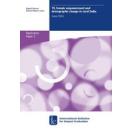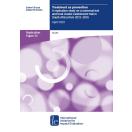
TV, female empowerment and demographic change in rural India
3ie Replication Paper 2
In this paper, Vegard Iversen and Richard Palmer-Jones re-examine the possible causal benefits of increased cable television access on women’s status. Robert Jensen’s and Emily Oster’s paper, The Power of TV: Cable Television and Women's Status in Rural India, tested this hypothesis that increased cable TV access is associated with improved women’s status in rural India. They found that the spread of cable television corresponded to changes in women’s status, including decreases in the acceptability of domestic violence, fertility, and son preference and increases in autonomy.
In the first 3ie-supported replication study, Iversen and Palmer-Jones posit that the underlying mechanisms are more complex than implied by the original study. Their analysis of Jensen’s and Oster’s study data reveals that variations in TV viewing habits, as well as education, influenced the outcomes of interest in these rural Indian communities. They also determine that cable television access increased female autonomy specifically for households that did not own televisions.

